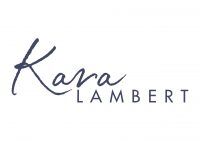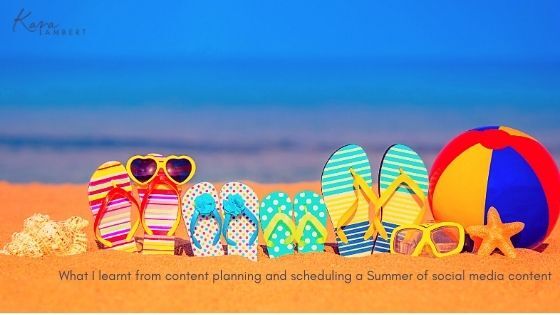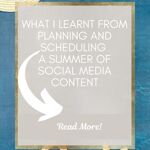There are four lessons I learnt from planning and scheduling out two months’ worth of social media content so that I could chill with my family: know what you’ve got, know what they want, and physically map it. I also learnt that it’s healthy for me to do this and my audience is happy for me to do it (and no my reach didn’t suffer).
In November 2020, like many, I was exhausted and I was looking forward to having the family home for Summer holidays. But that posed a problem, what to post in my Facebook Group. I wasn’t too worried about my social media as that had been planned, scheduled, and automated. My Private Facebook Group, however, ran off of the blog posts I wrote each week. If I was going to have a decent break, I needed that to include blogging. What to do?
Know what content you’ve got
I knew that I had A LOT of blog posts to draw on. I’m fortunate that I have blogged weekly for at least 6 years now. While some of the posts are no longer relevant, mostly due to defunct software I blog on, the majority are still relevant.
I don’t have an index of my blog posts, but I do have them all in one spot, all on my website, and all searchable.
I did learn the value of having a catalogue of assets and I developed this over the break so that I know where all my freebies and products are. It certainly is a time saver and it was eye-opening just how many things (and how many landing pages) I had produced (and forgotten).
Know what content your audience wants to see
 If you’ve been here a while, you’ll know where I’m headed. For those new to my blog, I’m not one for telling my audience what they want based on what I need to sell. I’m also a big believer in research, science, and psychology and thankfully marketing is finally realising the role of these in their activity.
If you’ve been here a while, you’ll know where I’m headed. For those new to my blog, I’m not one for telling my audience what they want based on what I need to sell. I’m also a big believer in research, science, and psychology and thankfully marketing is finally realising the role of these in their activity.
I’ve been running and advocating for human-centred (neuromarketing) marketing for many years now. In fact, I applied what I learnt with motivating staff to motivating an audience and discovered a few years ago that this is precisely how the big end of town make their big bucks.
The key to having engaging social media content is to understand and appeal to the self-image of your audience. I’ve gone on and broken that into five parts, their: fears, needs, beliefs, values, and goals. Understand these and apply it to how what you do/sell and you’ve got yourself some humming content.
When I scheduled my content, I knew it had all been written with their self-image at the centre. When I chose what to schedule, I looked at what issues they would confront in their business over the Summer break and I used this to help focus my content.
Bonus: My Facebook Group runs with set topic days. This helps with consistency and is based around the two main topics my members want: tech tips & psychology tips. Set days can help social media scheduling and creates structure (which people like).
Physically map your content plan
Old me is groaning, I used to be the kind of person who flew by the seat of her pants, loved the flexibility, and loathed the time when I needed to write/post/schedule content and nothing came to mind.
This Summer I wanted more time with my family and I also knew that I had a lot of client work to finish before I could chill out. That meant that my content had to be scheduled in any few spare moments I had. That meant I had to find and write out exactly which blog I was sharing on each day for the 8 weeks. Yes, I post 7 days a week in my group. Yes, that meant choosing 56 relevant blog posts for my audience. Yes, it took a while. Yes, I did it bit by bit. Yes, I got into a groove by the end.
I schedule my group posts in the group, my other socials are all done in external scheduling software, and this meant that I either needed to use pen and paper or a spreadsheet to map it all out. As I’m a bullet journal gal, one page of my journal became my content plan.
Bonus: A spreadsheet is a lot easier for this stuff as you can cut and paste links into the content plan and then use them for scheduling.
I filled out an 8×7 dated grid with content, leaving space for seasons greetings, promotions of products and events I was running at the time, and relevant daily hashtags. I also created a hashtag for the #summerseries so that members would know what was live and what was scheduled content.
P.S. I also use a 12-month content plan to map all of my content.
Engage with your scheduled content so your audience knows you still care
Even though I was on holidays, I was still active in my group. In fact, I told my group that I was going to remain active even though all the content they were going to see in the next two months was scheduled.
Bonus: People need to know that they’re important, they want to be part of something bigger, and especially in a service business they want to know you care and are available.
It also meant that I posted new and relevant content as it appeared in my newsfeed. I wanted my members to know that although I was on holidays, I was still watching out for their best interests and keeping them informed. During the holidays, Facebook announced they were trading likes for follows and the whole Google/News/Australian Government fight got tense and I made sure my members knew about these things.
 I made sure that I responded to posts and comments like I normally do. My members knew I was on holidays and that meant that every comment I made was time away from family making them feel valued – no one expected me to comment although I told them I’d remain active. It also meant that my group was active in their feed because we were feeding the Facebook algorithm with engagement. That’s always a good thing. I am a firm believer that every response improves the know, like, and trust with members (even those who stalk) and that means they are more likely to buy from me and they definitely advocate for me.
I made sure that I responded to posts and comments like I normally do. My members knew I was on holidays and that meant that every comment I made was time away from family making them feel valued – no one expected me to comment although I told them I’d remain active. It also meant that my group was active in their feed because we were feeding the Facebook algorithm with engagement. That’s always a good thing. I am a firm believer that every response improves the know, like, and trust with members (even those who stalk) and that means they are more likely to buy from me and they definitely advocate for me.
Summary
I’m glad I scheduled out my group content. It meant that I revisited my own content. It reinforced that I do help in a lot of different ways. I also learnt the power of indexing the resources I give away and sell.
The break from creating content meant that I was able to look back through my client notes and find those new content nuggets I can develop. I was also able to see where there were holes in my overall content focus.
I will definitely be planning and scheduling out my content next Summer as it really gave me the flexibility I aim for in running my own business.


